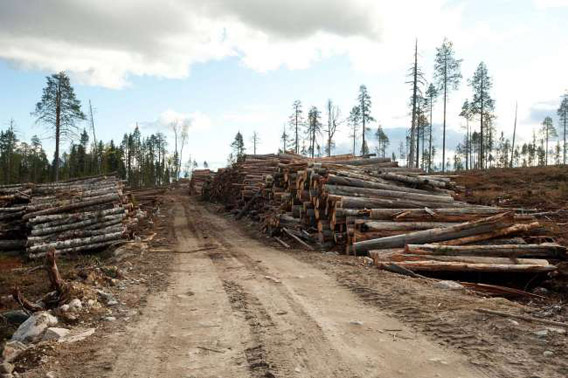
Destroyed old-growth forest with piles of timber on land leased by IKEA/Swedwood in Russian Karelia. Photo © Robert Svensson, Protect the Forest 2011.
A new campaign is targeting IKEA, the world’s biggest furniture retailer, for logging old-growth forests in the Karelia region of Russia. An alliance of groups, headed by the Swedish NGO Protect the Forest, allege that IKEA’s subsidiary, Swedwood, is clearcutting thousands of hectares of old and biodiverse forests. But, Swedwood’s 300,000 hectare concession is certified by the Forest Stewardship Council (FSC), generally considered the world’s strongest forestry certifier.
“It is very sad that forests that have taken centuries to mature can be lost in a few days. Thanks to IKEA’s promotion of the mass-consumption of cheap timber products, people’s appreciation of the true value of old forests is being undermined, and this threatens the rights of future generations to enjoy the benefits of our forest heritage,” Andrei Laletin with Friends of the Siberian Forests said in a press release.
Activists say the age of logged trees in the region can run as high as 200-600 years old. Josefin Thorell, a spokesperson with IKEA, admitted to mongabay that the average age of trees felled in the region is 160 years, but added that the age of the trees cut is less important than overall management of the concession.
“Responsible forestry is really about managing the forest in a way that protects biodiversity, rather than focusing on the age of individual trees,” Thorell says. “We set aside 16-17 percent of the forest to protect high conservation values, which is well above legal requirements as well as FSC requirements. The level corresponds to the goal set by the UN in the Global Convention on Biological Diversity (CBD).”
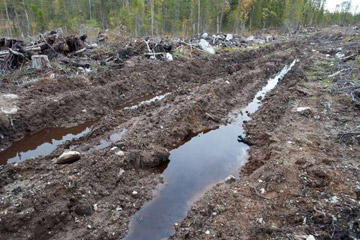 Destroyed old-growth forest and damage from logging machines on land leased by IKEA/Swedwood in Russian Karelia. Photo © Robert Svensson, Protect the Forest 2011. |
Old-growth forest is important because it contains the highest levels of biodiversity and stores the most carbon. However, despite this old-growth forest cover continues to vanish around the world.
But Thorell says that IKEA is not over-exploiting its forest concession.
“The felling rate in our lease is low; about 0.4 percent of the lease per year, which is much lower than the average pace for Karelian forestry,” he notes.
Viktor Säfve with Protect the Forest agrees that Swedwood cuts no more than 1,000-2,000 hectares annually, however, he says the company consumes more wood from the region than it cuts.
“IKEA/Swedwood not only use wood from ancient forests that they clear-cut themselves, they also buy timber from other players in the area, so the actual number of old-growth that IKEA has contributed to the destruction of is greater,” Säfve says.
Part of the problem comes to down to the definition of High Conservation Value (HCV) forest.
“We have developed methods for ecological inventory and protection of red listed and other valuable species. Our forest planners, who are well educated in Russian ecological conditions, perform those inventories well in advance of harvest. In cases where we find high conservation value, we do not log,” Thorell says.
However, investigative journalism by a German media program, Plus-minus, documented clear-cut logging in High Conservation Value forests, identified by the FSC, in Swedwood’s concession last year. Swedwood has already been investigated once by the Rainforest Alliance, which found that the logging subsidiary of IKEA was fulfilling its commitment to the FSC. But since then another investigation has been instigated by WWF-Sweden. Given the ongoing problems, some are pointing fingers not just at IKEA, but at the FSC.
Is the FSC the problem?
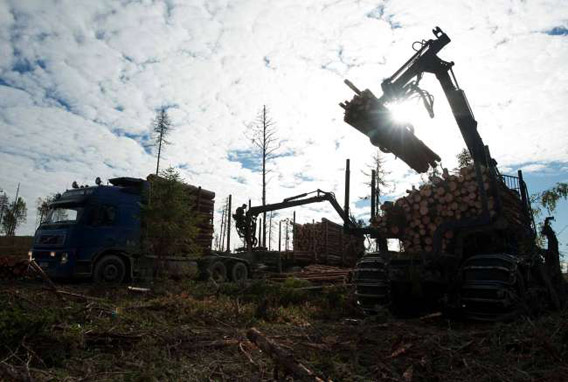
Clear-cutting of an old-growth forest which has never before been affected by modern forestry, on land leased by IKEA/Swedwood in Russian Karelia. Photo © Robert Svensson, Protect the Forest 2011
Over the years the Forest Stewardship Council (FSC) has garnered a large following of critics. Balancing environmental stewardship with industry desires is often a thankless job, however even given that the FSC has seen a surprising number of scandals. Although the FSC promotes itself as certifying only sustainable forestry, is also certifies several forestry practices that some experts deem unsustainable, such as old-growth logging, clear-cutting, and monoculture plantations. The FSC certifies such practices with built-in regulations and conditions, but still, the certifier’s track record has been marred by what critics contend are systemic problems, such as the certification of companies linked in some cases to violent oppression of locals, land rights issues, and pollution, let alone the destruction of native forests.
Simon Counsell, the director of the Rainforest Foundation UK, told mongabay.com that the problems in IKEA’s Karelia logging “looks very familiar to dozens of other problematic certificates where the FSC’s Principles and Criteria appear not to have been fully complied with—though,” he adds, “that does not make the situation any more acceptable.”
Despite such issues the FSC is backed by several prominent environmental groups, most notably the World Wide Fund for Wildlife (WWF) and Greenpeace.
“WWF does not support any logging that is not responsible or that could damage High Conservation Value forests. WWF considers the High Conservation Value concept the key approach to identify and sustain major ecological and social values of forests globally,” Elisabeth Brisum, a WWF representative told mongabay.com. However, the group did not state whether or not it supported old-growth logging.
But given ongoing concerns with IKEA’s logging in Karelia, WWF-Sweden has raised a second complaint against Swedwood’s operations, which is currently being investigated.
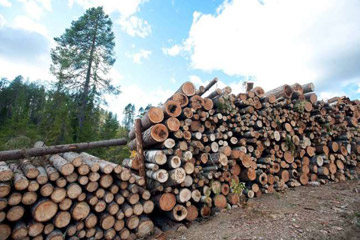 A pile of timbers from centuries-old trees on land leased by IKEA/Swedwood in Russian Karelia. Some trees were 500-600 years old. Photo © Robert Svensson, Protect the Forest 2011. |
“While some conservation groups worry that FSC standards are too lenient and open forests to unsustainable exploitation, some businesses and governments claim the FSC standards are too restrictive and limit their ability to be competitive,” Brisum with WWF says. “FSC has a rigorous and transparent conflict resolution mechanism. Using this system to investigate complaints should not be seen as a failure of the system; on the contrary, it leads to further dialogue and improvement of the system.”
Still ongoing problems within the FSC has led several environmental groups, which used to support the initiative, to jettison from the group. Counsell says the issues may even start to impact timber business support, which to date has not wavered like environmental groups.
“The problem now is that it is not only NGOs that are starting to have major concerns with the FSC system but also, increasingly, the timber industry too. Many traders and retailers are investing a lot of effort in good faith to ‘do the right thing,’ only to find that the FSC system is letting them down, principally because the FSC Secretariat has absolutely no control over the certification companies,” Counsell says.
At this point IKEA stands strongly behind the FSC initiative. IKEA spokesperson, Josefin Thorell, calls the group “the strongest international certification standard available.” As of last year 16.2 percent of IKEA’s total wood products were FSC-certified. Four years ago, the company said it hoped to reach 30 percent FSC certification within “a few years.” IKEA has blamed missing this target in part on availability of certified wood and the fact that its sale of wood products was on the rise.
“The FSC principles and criteria aim to strike a balance between what is environmentally appropriate, socially beneficial and economically viable,” Thorell continues. “It is about protecting biodiversity, ensuring re-growth, as well as protecting the rights and needs of those who work and live in the forest while also stimulating economic development.”
Striking a balance between economy and environment is the argument put forward both by industry and supportive environment groups like WWF for the FSC. But to date the FSC has put no price tag on the unvalued ecosystems services provided by forests, such as carbon sequestration, rainfall production, erosion mitigation, biodiversity, and water health. Many groups readily admit that the FSC has problems, but they would rather stick with the certification program than lose a seat-at-the-table and thereby give up their ability to push for improvements. Members of the FSC, both industry and environmental, participate in a democratic process to make changes to the organization.
“Trying to prohibit the use of forest resources isn’t a viable or desirable solution,” Birsum with WWF says. “WWF believes that responsible forest management can be an important part of broader conservation strategies, as long as forest quality is maintained along with biodiversity and cultural values. Well managed commercial or community forests can, for example, provide vital buffers for and links between protected areas.”
But do critics have a point that the FSC, which did not return requests for comment, is no longer well-managed?
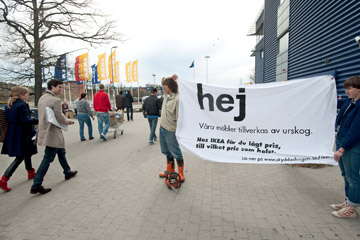 Protestors with a sign in Swedish that reads: “Hello, our furniture is made of old-growth forests. At IKEA you get low prices at any cost.” |
“These kinds of problems will continue to occur, and the FSC’s credibility will continue to decline, as long as the FSC Secretariat does not take direct control of the quality of the certification bodies’ work,” says Counsell, who recommends that the FSC undergo systematic changes in order to “tightly control the quality of certification assessments.”
Today, he contends, too many lax companies are becoming certified due to a conflict of interest between FSC certifying companies and the logging industry.
“Certifiers are all effectively competing with each other to carry out the cheapest and lowest grade certification assessments in order to maximize their profits,” he notes.
Even with such criticism the FSC system continues to grow, although whether or not consumers will continue to trust its stamp of sustainability remains an open question. Consumers will have to decide how comfortable they are with controversial forestry practices, and whether or not the FSC’s current regulations go far enough to mitigate environmental damage.
Meanwhile the campaign against IKEA continues. Last month, protestors targeted eight IKEA stores in Sweden, distributing information about old-growth logging in Karelia “and [IKEA’s] attempt to greenwash it” to furniture consumers.
“Karelia is an area with high nature values and the decision to source wood in this area brings on great responsibility. We take that responsibility very seriously,” Thorell with IKEA says. “We source wood with long term consideration and we want to make sure that the way we source helps protect biodiversity.”
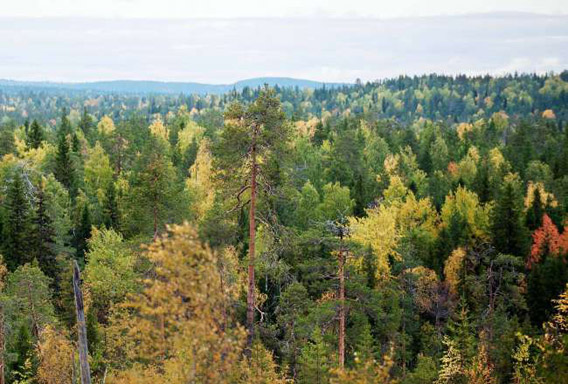
Intact old-growth forest on land leased by IKEA/Swedwood in Russian Karelia. Photo © Robert Svensson, Protect the Forest 2011.
Related articles
Can loggers be conservationists?

(05/10/2012) Last year researchers took the first ever publicly-released video of an African golden cat (Profelis aurata) in a Gabon rainforest. This beautiful, but elusive, feline was filmed sitting docilely for the camera and chasing a bat. The least-known of Africa’s wild cat species, the African golden cat has been difficult to study because it makes its home deep in the Congo rainforest. However, researchers didn’t capture the cat on video in an untrammeled, pristine forest, but in a well-managed logging concession by Precious Woods Inc., where scientist’s cameras also photographed gorillas, elephants, leopards, and duikers.
Controversial logging company sells operations in DR Congo
(03/23/2012) Danzer, a Swiss-German forestry company that has been subject to much criticism by environmentalists for its logging practices in the Democratic Republic of Congo (DRC), has sold its operations in the Central African country, reports Greenpeace.
Economic slowdown leads to the pulping of Latvia’s forests
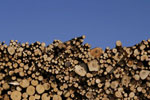
(01/23/2012) The economic crisis has pushed many nations to scramble for revenue and jobs in tight times, and the small Eastern European nation of Latvia is no different. Facing tough circumstances, the country turned to its most important and abundant natural resource: forests. The Latvian government accepted a new plan for the nation’s forests, which has resulted in logging at rates many scientists say are clearly unsustainable. In addition, researchers contend that the on-the-ground practices of state-owned timber giant, Latvijas Valsts meži (LVM), are hurting wildlife and destroying rare ecosystems.
WWF partnering with companies that destroy rainforests, threaten endangered species
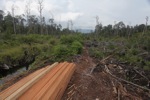
(07/25/2011) Arguably the globe’s most well-known conservation organization, the World Wide Fund for Nature (WWF), has been facilitating illegal logging, vast deforestation, and human rights abuses by pairing up with notorious logging companies in a flagging effort to convert them to greener practices, alleges a new report by Global Witness. Through its program, the Global Forest and Trade Network (GFTN), WWF—known as World Wildlife Fund in the US and Canada—has become entangled with some dubious companies, including one that is imperiling orangutans in Borneo and another which has been accused of human rights abuses in the Congo rainforest. Even with such infractions, these companies are still able to tout connections to WWF and use its popular panda logo. The Global Witness report, entitled Pandering to the Loggers, calls for WWF to make large-scale changes in order to save the credibility of its corporate program.
Russia creates massive park for rare cats
(04/13/2012) Russia has created a massive national park to protect some of the world’s rarest big cats, the critically endangered Amur tigers and leopards, reports the Wildlife Conservation Society (WCS).
FSC mulls controversial motion to certify plantations responsible for recent deforestation

(06/24/2011) Members of the Forest Stewardship Council (FSC), meeting in Malaysia this week for its General Assembly, will consider various changes to the organization, including a vote on a controversial motion that would open the door—slightly at first—to sustainable-certification of companies that have been involved in recent forest destruction for pulp and paper plantations. Known as Motion 18, the change is especially focusing on forestry in places where recent deforestation has been rampant, such as Indonesia and Malaysia.
FSC to continue allowing baboon killing on sustainably-certified plantations

(06/23/2011) Shooting baboons will continue in Forest Stewardship Council (FSC)-certified plantations. After examining a complaint by the NGO GeaSphere against South African plantations for trapping and shooting hundreds of baboons, the FSC has announced it will not place a moratorium on baboon-killing in its sustainably-certified plantations.
Ahead of meeting, Forest Stewardship Council (FSC) loses another supporter
(06/19/2011) The forest organization, FERN, has pulled its support from the Forest Stewardship Council (FSC), reports FSC-Watch. FERN has quit the increasingly troubled organization due to FSC pursuing carbon credits through forestry. The FSC loses FERN just weeks before its 6th General Assembly, in which FSC partners—including private corporations and some environmental groups—will meet to debate current practices.
Complaint lodged at FSC for plantations killing baboons
(02/20/2011) The African environmental group, GeaSphere, has lodged a complaint with the Forest Stewardship Council’s (FSC) for certifying tree plantations as sustainable that are culling baboons in South Africa, as first reported by FSC-Watch. The primates are trapped with bait and then shot. According to the complaint, “unofficial numbers from reliable sources state that more than 1000 baboons have been shot over the past 2 years” in Mpumalanga Province. Documents record permits given to cull 1,914 baboons in 13 separate plantations, however Philip Owen of GeaSphere says that plantations have refused to release official data on how many baboons have been killed.
Locals clash with ‘sustainable’ FSC logging company in the Congo
(05/22/2011) Two separate protests against logging companies by local communities have turned violent in the Democratic Republic of Congo (DRC), leaving at least one dead. According to Greenpeace, one of the companies involved in the violence, Sodefor, is sustainably certified by the Forest Stewardship Council (FSC). Given that the industry in DRC is rife with social conflict and corruption, Greenpeace is advocating that FSC place a moratorium on certifying new industrial-style logging concessions in the central African nation.
Australia forest destruction connected to local products
(05/15/2011) Some of Australia’s most popular stores are driving the destruction of native forests, according to a report by a new environmental group Markets for Change (MFC). Furniture, building materials, and paper products were found to be coming at the expense of native forests in Australia and being sold by over 30 businesses in the country, such as Freedom Furniture, Bunnings, Officeworks, Staples, Target, Coles, and Woolsworths.
New NASA images reveal devastating impact of Russian fires
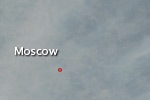
(08/11/2010) A new series of images released by NASA show the extent of smoke hovering over Moscow and Central European Russia, while another image measures the amount of carbon monoxide in the area, a gas which can produce a number of health problems. Russia is in the midst of a full-scale disaster as hundreds of forest and peatland fires are covering part of the world’s largest nation in a thick cloud of smoke. Temperatures in Moscow and elsewhere have broken past heat records several times in the last month while a long drought combined with fires have led to the loss of 20 percent of Russia’s grain crop, causing Prime Minister Vladimir Putin to ban grain exports. Russian officials say that it;s likely some 15,000 people to date have died from the disaster.
Developed countries plan to hide emissions from logging

(12/09/2009) While developing countries in the tropics have received a lot of attention for their deforestation emissions (one thinks of Brazil, Indonesia, and Malaysia), emissions from logging—considered forest cover change—in wealthy northern countries has been largely overlooked by the media. It seems industrialized countries prefer it this way: a new study reveals just how these countries are planning to hide forestry-related emissions, allowing nations such as Canada, Russia, and the EU to contribute to climate change without penalty.
New report: boreal forests contain more carbon than tropical forest per hectare

(11/12/2009) A new report states that boreal forests store nearly twice as much carbon as tropical forests per hectare: a fact which researchers say should make the conservation of boreal forests as important as tropical in climate change negotiations. The report from the Canadian Boreal Initiative and the Boreal Songbird Initiative, entitled “The Carbon the World Forgot”, estimates that the boreal forest—which survives in massive swathes across Alaska, Canada, Northern Europe, and Russia—stores 22 percent of all carbon on the earth’s land surface. According to the study the boreal contains 703 gigatons of carbon, while the world’s tropical forests contain 375 gigatons.